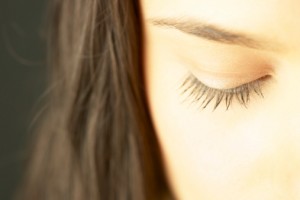 Paleo and primal diets enjoy great popularity today. So do ancient methods of food cultivation and other back-to-our-roots practices.
Paleo and primal diets enjoy great popularity today. So do ancient methods of food cultivation and other back-to-our-roots practices.
But I wonder if anyone would be willing to try my preindustrial sleep solution?
One of the odd things Dave and I experienced during the circumnavigation of Death Valley National Park was a kind of split sleep. We’d go down with the sun around 8pm, snooze for 4 hours until just after midnight, wake up and fiddle around for a while, lay down again around 1:30am, then wake up about 4 hours later to get moving at dawn.
About a month after we came out of the desert, I learned that our waking in the middle of the night wasn’t just about the high temperatures, which would make it hard for anyone to log continuous shut-eye. Turns out it was also about an ancient and nearly forgotten pattern we humans quit after the electric lightbulb was invented.
In the new book Dreamland, the author describes some findings a history professor uncovered during research about life before the introduction of artificial light sources: people slept in two segments, sometimes called “first sleep” and “second sleep.”
The time between the two bouts of sleep was a natural and expected part of the night and, depending on your needs, was spent praying, reading, contemplating your dreams, urinating, or having sex. (p. 33)
Evidently the professor was reluctant to conclude that the way we sleep now is “unnatural.” But in the meanwhile, a psychiatrist was conducting a research experiment, depriving subjects of artificial light so that he could mimic the rhythms of early human life. Eventually, they all started this segmented sleep, too, waking up a little after midnight, hanging out for a while, then dropping off again until morning.
Based on this and other studies, the “solid night’s sleep” that’s the quest of every insomniac is a departure from our natural sleep pattern. We have adapted, or most of us have. Makes me wonder what number of people diagnosed with sleep disorders just have a stronger internal clock, unpersuaded by modern life?
This isn’t a manifesto championing the curative powers of segmented sleep, but instead insight into one of those mysterious things we rediscover when we let go of some of our conveniences. Something to think about when you’re lying there in the middle of the night, perhaps.










marsh, i totally agree people now a days are all pampered to the new technology and life style.. people tend to lean on what they depend on and not on what they can do in their own initiative…we have all these essentials around us that are handy when you need them and from here you have less motivation to be more on self reliant in general….regards, rainier layug
Well put, Rainier! Thanks for your insights.
What I wonder is why lights changed that. Is it that we stay up later and thereby no longer have much of a first sleep? If I stay up late but sleep in still getting 8 hours why would I not have a mid sleep wakeup. Does midnight have anything to do with it? Or is it simply our clocks are too skewed from the constant changes in times we sleep since light is so easily controlled. Interesting topic.
Yep, artificial lights allow us to control/choose our sleep patterns. Habituation plays a big part–most people don’t experience split sleep the first night they have no artificial light. I agree that this is an interesting topic, and I’m looking into it more in depth, especially since my daughter just told me about some of the “dark sky” initiatives and lobbyists (http://www.darksky.org/). Parts of Death Valley provide some of the darkest night skies, but the park is still affected by the glow coming off of Las Vegas. Fascinating stuff!